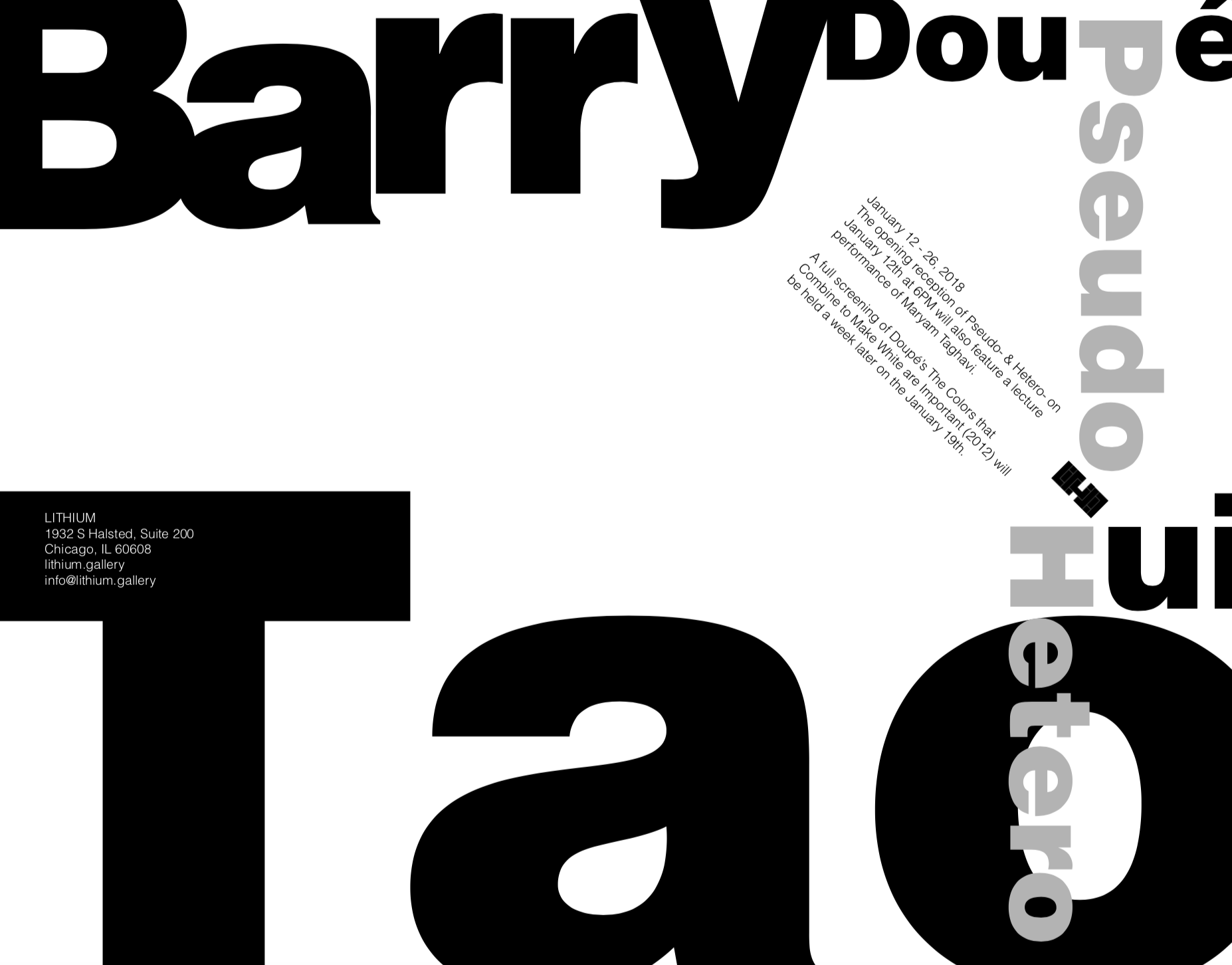
 Still from The Colors that Combine to Make White are Important (2012). Image courtesy of the artist.
Still from The Colors that Combine to Make White are Important (2012). Image courtesy of the artist. Still from The Dusk of Tehran (2014). Image courtesy of the artist.
Still from The Dusk of Tehran (2014). Image courtesy of the artist.Pseudo- & Hetero-
A dual exhibition by Tao Hui and Barry Doupé
January 12 – 26, 2018
Pseudo- and hetero-, as respective prefixes of literary terms, pseudonym and heteronym, will frame the dialogue between the two featured artists, Tao Hui and Barry Doupé. While a pseudonym, literally meaning a “false name” in Greek, is a pen name adopted by an author; a heteronym, in literature, defined and developed by Portuguese writer and poet Fernando Pessoa, is a separate identity invented. Under a pseudonym the author is still himself as he writes, whereas for a heteronym, the author excused himself for a fictive writer who lives and writes independently. Surpassing the mere change of “nym” (name), Pseudo- is a temporary existence, a part-time alter ego with a disparate appearance, gender, and belief. Hetero-, in reverse, bifurcates, multiplies, and dissolves into different and distinct identities.
In Tao’s videos, the self takes up a proactive presence under pseudo identities. In Talk About Body (2013), the artist himself, dressed as an Islamic woman, describes his body parts in anatomical terms to a silent crowd in a bedroom. The Islamic attire enwraps and conceals the artist’s body, letting us only imagine his body form through the speech. In The Dusk at Teheran (2014), the speech that Hong Kong singer Anita Mui made at her farewell concert before her death of cancer—a lamentation about missing out marriage and family—is reenacted as a conversation between an Iranian woman and her taxi driver. The shift of the speaker from an ill, middle-aged woman who owned a successful singing career, to a vital, young woman who is prohibited by law to perform in public, enhances the interpretation of the speech itself.
In Doupé’s computer-animated films, The Colors that Combine to Make White Are Important (2012) and Ponytail (2008), the characters live on the contingencies of simulated animation cycles and the text-to-speak converter that translates the artist’s streams of consciousness into foreign languages, respectively Japanese and German. The Colors has two parallel storylines, one involving the investigation of a suspec employee in a failing Japanese glass factory, and the other a stolen painting. Stemming from the Japanese salaryman genre, The Colors explores and subverts the business power structure through narrative and language. Ponytail resembles a Lynchian melodrama that interweaves various storylines, one of which is to find a girl named Jennifer, who never made appearance throughout the film. Ponytail puts together the characters’ attempts, or the failure thereof, to fulfill their personal desires. In both cases, the artist’s authorship is taken over by his characters who, as the film progresses, begin to explore themselves and achieve heteronymous identities. There is a constructed world from which the insiders, the digital bodies, cannot escape and to which the outsiders, the creator and the viewer, have no access.
January 2018